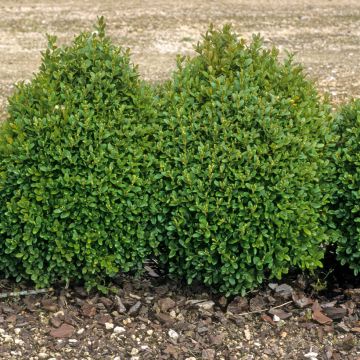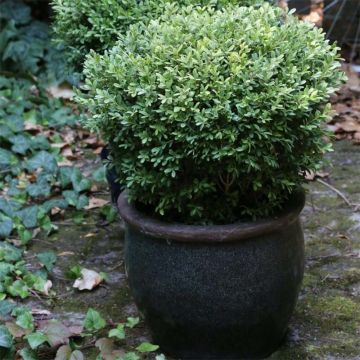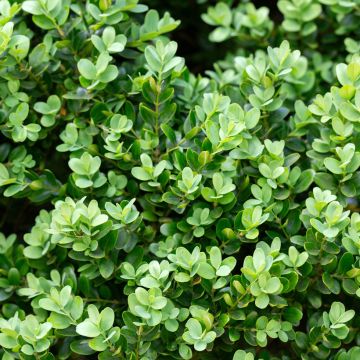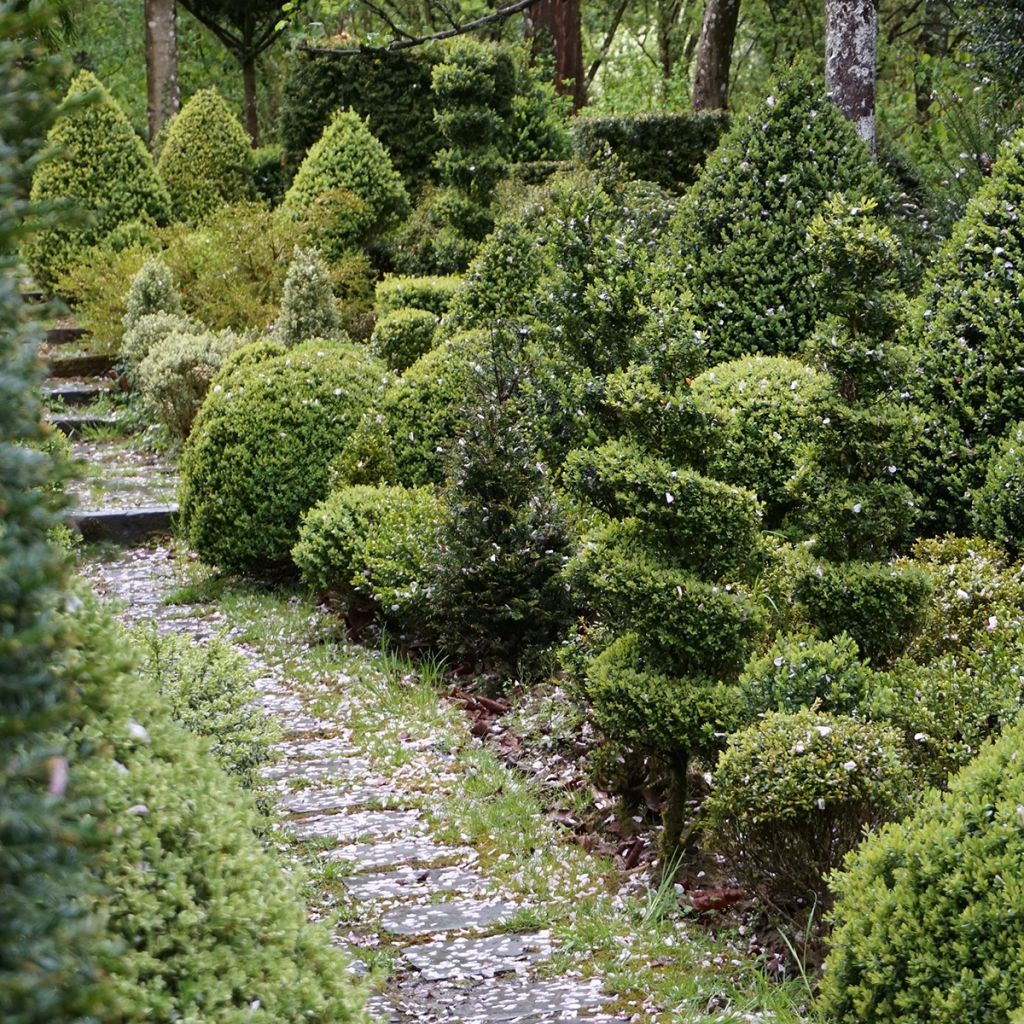

Buxus sempervirens Arborescens - Boxwood
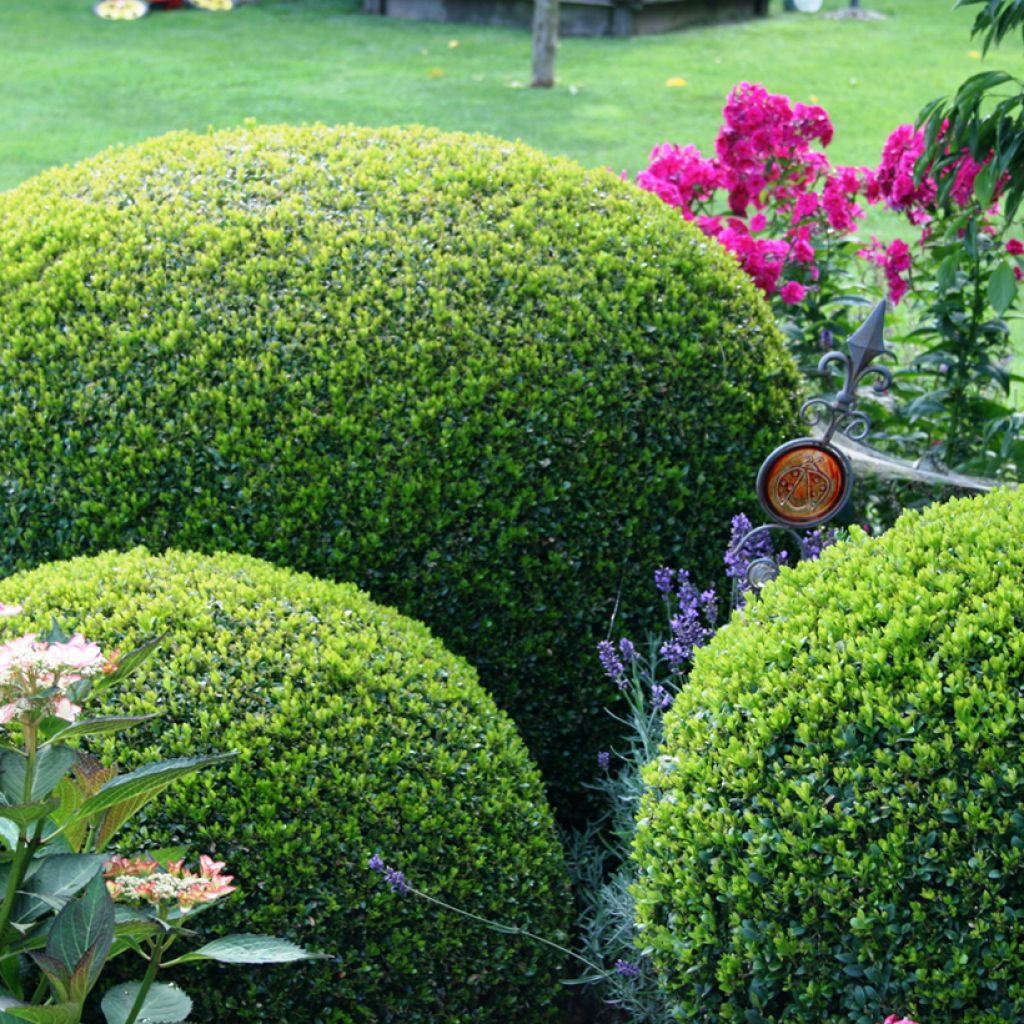

Buxus sempervirens Arborescens - Boxwood


Buxus sempervirens Arborescens - Boxwood
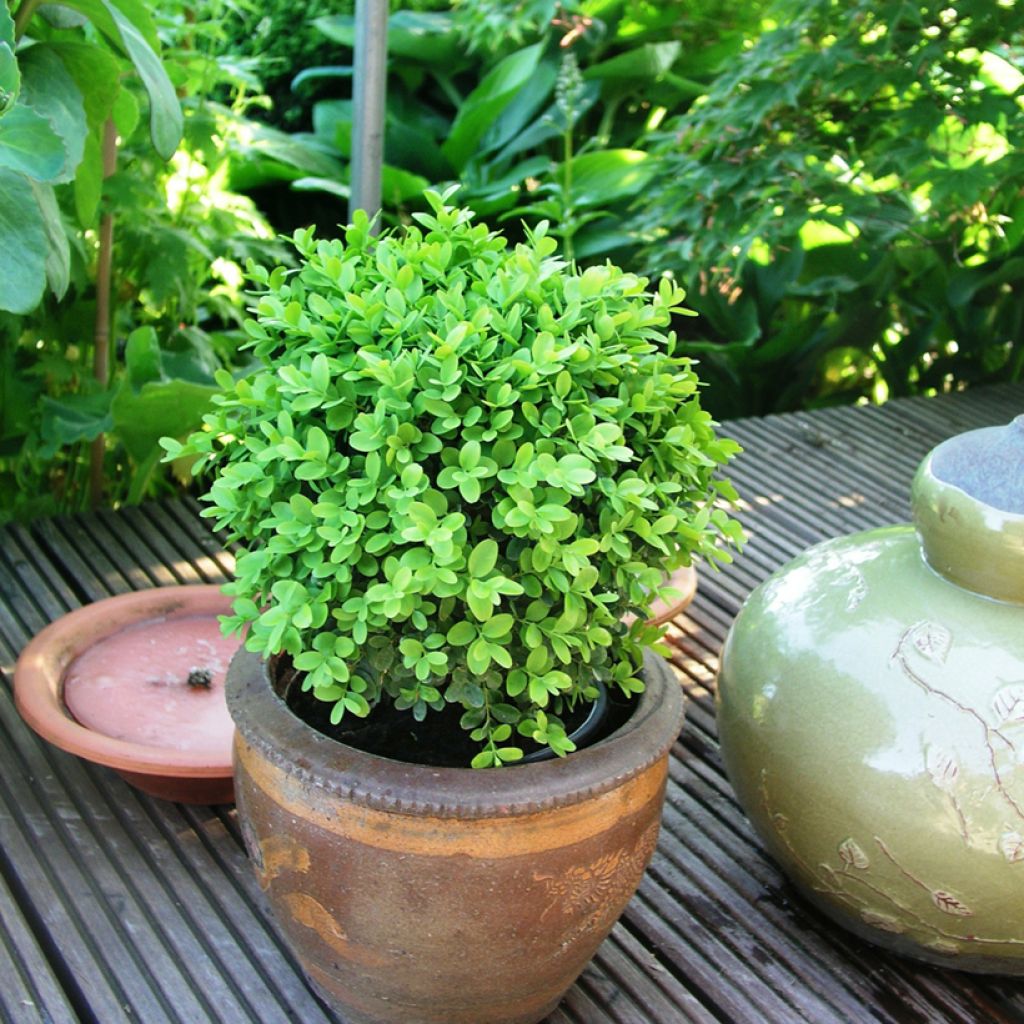

Buxus sempervirens Arborescens - Boxwood
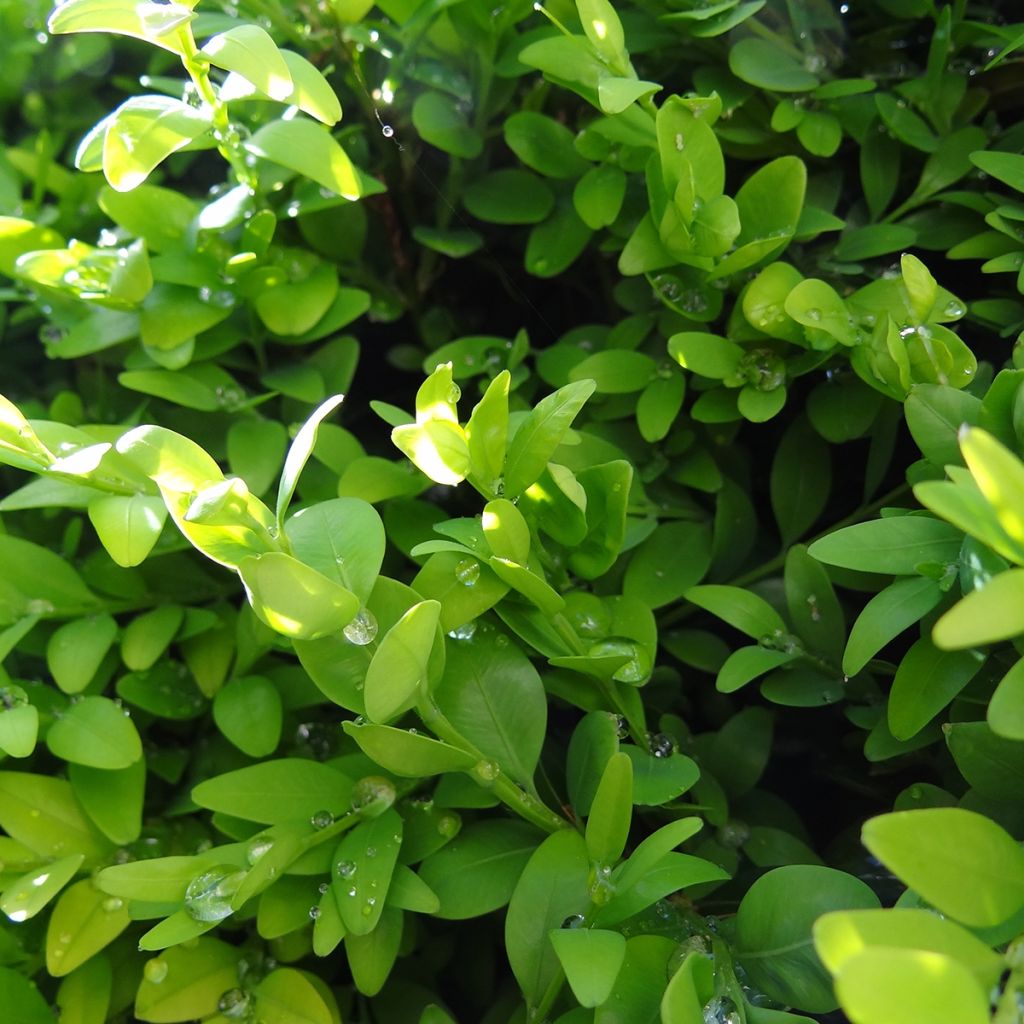

Buxus sempervirens Arborescens - Boxwood
Buxus sempervirens Arborescens - Boxwood
Buxus sempervirens Arborescent
Common Box, European Box, Boxwood
This item cannot be shipped to the selected country
Delivery charge from €5.90
More information
Schedule delivery date,
and select date in basket
This plant carries a 24 months recovery warranty
More information
We guarantee the quality of our plants for a full growing cycle, and will replace at our expense any plant that fails to recover under normal climatic and planting conditions.
From €5.90 for pickup delivery and €6.90 for home delivery
Express home delivery from €8.90.
Does this plant fit my garden?
Set up your Plantfit profile →
Description
The Common Boxwood or Buxus sempervirens 'Arborescens' is the best cultivar for topiary art! Its slow growth and erect, dense development make it perfect for creating various shapes through pruning : spherical, pyramidal or conical. Like other common boxwoods, it has medium-sized, glossy dark green leaves with a matte light green underside that persist on the bush and structure the garden all year round. Hardy and tolerant of all soils and exposures, it also withstands temporary dryness, limestone and pollution. Its easiness to grow and generous dimensions make it the obvious choice for creating large, trimmed hedges in classical-style gardens.
The 'Arborescens' Common Boxwood is distinguished by its more upright and compact habit compared to the species. Its origins are uncertain, but it is generally accepted that they are found in southern Europe, Asia Minor and North Africa. It can be found in Portugal, northern Spain, France, Germany, England, southern Belgium, Luxembourg and Switzerland. But also in the Balkans, as well as in Bulgaria. As shown by this vast distribution area, it is a very ubiquitous shrub, capable of adapting to any type of soil and climate.
The 'Arborescens' common boxwood is a slow to medium-growing shrub with aromatic leaves (which can smell unpleasant), leathery, evergreen and usually dark green. After 10 years, it only reaches a height of 1.5 m (4 ft 11 in) and a width of 1 m. It is interesting to note that its appearance varies greatly depending on its living conditions. In humid or shaded areas, its leaves will be darker green and larger, and the plant will exceed 4-5 m (13 ft 1 in-16 ft 5 in) in all directions. In rather dry, even very dry, and sunny areas, its leaves will be lighter, sometimes almost yellow, and its development more modest. In autumn or winter, sometimes as early as the end of summer in very dry climates, the foliage can take on interesting bronze or orange hues. The abundant, nectar-rich and fragrant flowering, in clusters of small greenish petals and bunches of yellow stamens, occurs in April-May. Each cluster consists of a terminal female flower and several pendulous male flowers. This flowering is followed by the formation of small brownish-grey, leathery capsules containing numerous mature seeds by the end of summer. Their scent attracts ants, which disperse them, thus contributing to the multiplication of the plant. Buxus sempervirens 'Arborescens' is commonly seen in 50-year-old gardens of country houses, and in very old gardens, individuals over 500 years old can be found.
The very dense foliage of the 'Arborescens' cultivar is composed of medium-sized, glossy green leaves, lighter when they first emerge. With its truly slow growth, this large shrub with a naturally upright and dense habit has all the other characteristics of the type. It is perfect for creating hedges that enhance every structure in the garden as well as all neighbouring plants. Annual pruning in June is sufficient, allowing for the fragrant and abundant spring flowering. Boxwood is often used on terraces, in beautiful ceramic or stone vases, and in small gardens for its strong decorative value all year round, while taking up little space. In herb gardens, it can border squares of aromatic plants, different parts of a vegetable garden or an area reserved for cut flowers... In a slightly wild area of the garden, under large trees for example, it will form pretty green bushes all year round, emerging from a carpet of Algerian Bellecour ivy, for example.
To create a hedge, plan for 5 pots per linear metre.
A legendary tree: boxwood has a lemon-yellow coloured, remarkably hard wood with a very fine grain. It is the hardest wood that can be found in the northern hemisphere. It ranks just behind ebony, which comes from various species native to the tropical regions of the Old World. A symbol of immortality, it has been used since antiquity for the quality of its wood: the Greeks and Romans used it to make tablets covered with wax on which they wrote. Highly sought after by turners, engravers, and sculptors, it was also used to make various musical instruments, tool handles, and the mallets of Masonic lodges, where it symbolized firmness and perseverance.
Report an error about the product description
Buxus sempervirens Arborescens - Boxwood in pictures
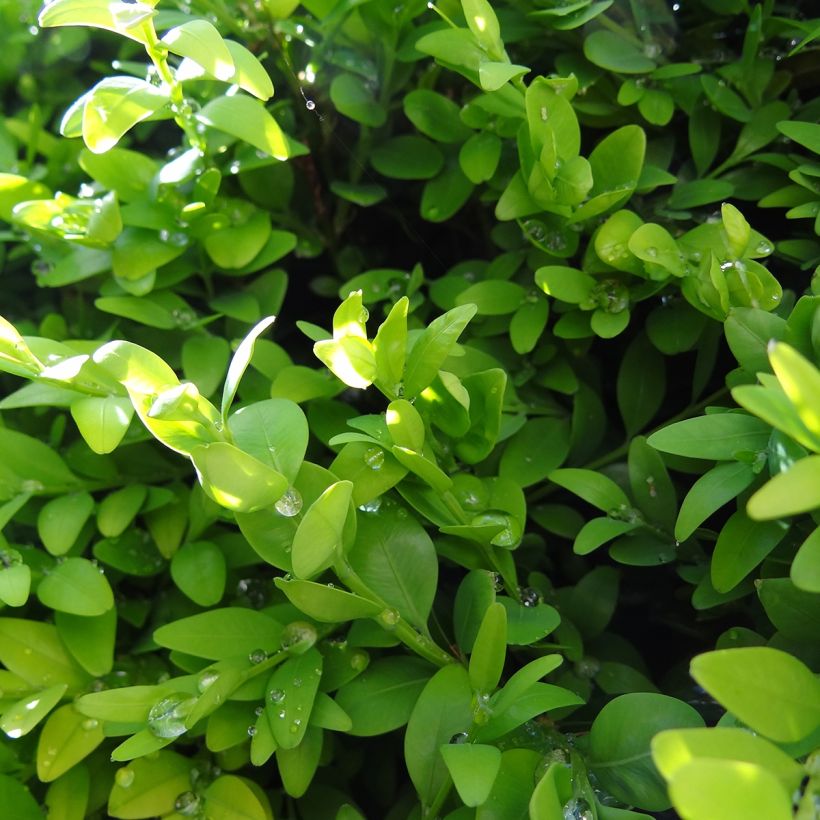

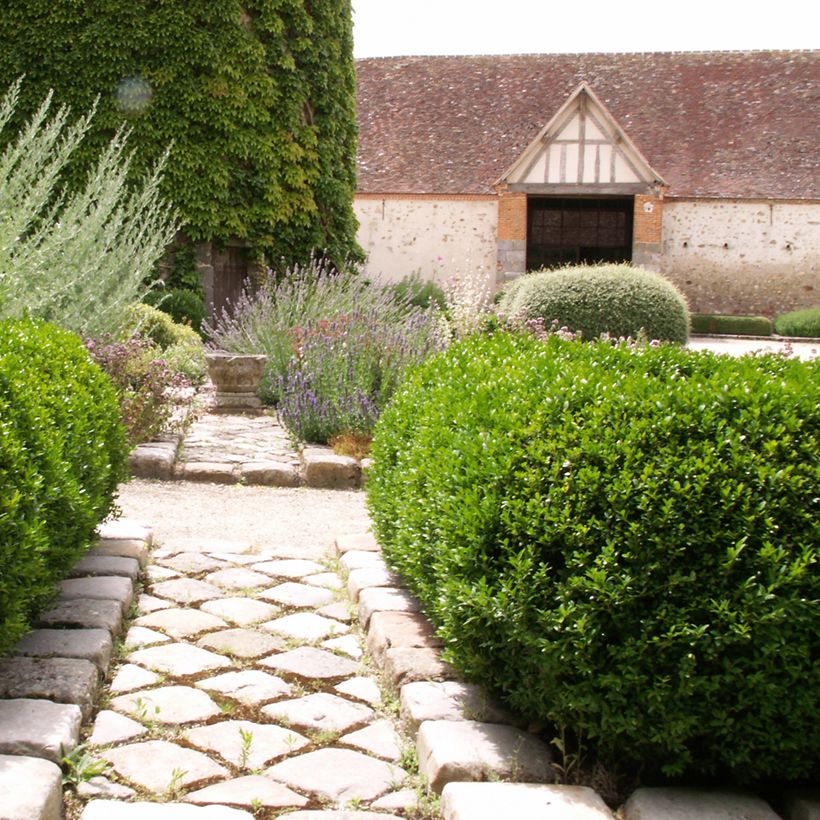

Plant habit
Flowering
Foliage
Botanical data
Buxus
sempervirens
Arborescent
Buxaceae
Common Box, European Box, Boxwood
Cultivar or hybrid
Other Buxus - Boxwood
Planting and care
Of really easy cultivation, the common boxwood prefers a neutral or slightly chalky soil but proves to be really accommodating as evidenced by its extremely wide distribution range and the diversity of environments to which it adapts. It will grow in any well-prepared and well-tilled soil and in all exposures. For pot cultivation, apply rose fertilizer once or twice a year, and protect from very strong and lasting frosts that can damage the foliage superficially.
Planting period
Intended location
Care
This item has not been reviewed yet - be the first to leave a review about it.
Haven't found what you were looking for?
Hardiness is the lowest winter temperature a plant can endure without suffering serious damage or even dying. However, hardiness is affected by location (a sheltered area, such as a patio), protection (winter cover) and soil type (hardiness is improved by well-drained soil).

Photo Sharing Terms & Conditions
In order to encourage gardeners to interact and share their experiences, Promesse de fleurs offers various media enabling content to be uploaded onto its Site - in particular via the ‘Photo sharing’ module.
The User agrees to refrain from:
- Posting any content that is illegal, prejudicial, insulting, racist, inciteful to hatred, revisionist, contrary to public decency, that infringes on privacy or on the privacy rights of third parties, in particular the publicity rights of persons and goods, intellectual property rights, or the right to privacy.
- Submitting content on behalf of a third party;
- Impersonate the identity of a third party and/or publish any personal information about a third party;
In general, the User undertakes to refrain from any unethical behaviour.
All Content (in particular text, comments, files, images, photos, videos, creative works, etc.), which may be subject to property or intellectual property rights, image or other private rights, shall remain the property of the User, subject to the limited rights granted by the terms of the licence granted by Promesse de fleurs as stated below. Users are at liberty to publish or not to publish such Content on the Site, notably via the ‘Photo Sharing’ facility, and accept that this Content shall be made public and freely accessible, notably on the Internet.
Users further acknowledge, undertake to have ,and guarantee that they hold all necessary rights and permissions to publish such material on the Site, in particular with regard to the legislation in force pertaining to any privacy, property, intellectual property, image, or contractual rights, or rights of any other nature. By publishing such Content on the Site, Users acknowledge accepting full liability as publishers of the Content within the meaning of the law, and grant Promesse de fleurs, free of charge, an inclusive, worldwide licence for the said Content for the entire duration of its publication, including all reproduction, representation, up/downloading, displaying, performing, transmission, and storage rights.
Users also grant permission for their name to be linked to the Content and accept that this link may not always be made available.
By engaging in posting material, Users consent to their Content becoming automatically accessible on the Internet, in particular on other sites and/or blogs and/or web pages of the Promesse de fleurs site, including in particular social pages and the Promesse de fleurs catalogue.
Users may secure the removal of entrusted content free of charge by issuing a simple request via our contact form.
The flowering period indicated on our website applies to countries and regions located in USDA zone 8 (France, the United Kingdom, Ireland, the Netherlands, etc.)
It will vary according to where you live:
- In zones 9 to 10 (Italy, Spain, Greece, etc.), flowering will occur about 2 to 4 weeks earlier.
- In zones 6 to 7 (Germany, Poland, Slovenia, and lower mountainous regions), flowering will be delayed by 2 to 3 weeks.
- In zone 5 (Central Europe, Scandinavia), blooming will be delayed by 3 to 5 weeks.
In temperate climates, pruning of spring-flowering shrubs (forsythia, spireas, etc.) should be done just after flowering.
Pruning of summer-flowering shrubs (Indian Lilac, Perovskia, etc.) can be done in winter or spring.
In cold regions as well as with frost-sensitive plants, avoid pruning too early when severe frosts may still occur.
The planting period indicated on our website applies to countries and regions located in USDA zone 8 (France, United Kingdom, Ireland, Netherlands).
It will vary according to where you live:
- In Mediterranean zones (Marseille, Madrid, Milan, etc.), autumn and winter are the best planting periods.
- In continental zones (Strasbourg, Munich, Vienna, etc.), delay planting by 2 to 3 weeks in spring and bring it forward by 2 to 4 weeks in autumn.
- In mountainous regions (the Alps, Pyrenees, Carpathians, etc.), it is best to plant in late spring (May-June) or late summer (August-September).
The harvesting period indicated on our website applies to countries and regions in USDA zone 8 (France, England, Ireland, the Netherlands).
In colder areas (Scandinavia, Poland, Austria...) fruit and vegetable harvests are likely to be delayed by 3-4 weeks.
In warmer areas (Italy, Spain, Greece, etc.), harvesting will probably take place earlier, depending on weather conditions.
The sowing periods indicated on our website apply to countries and regions within USDA Zone 8 (France, UK, Ireland, Netherlands).
In colder areas (Scandinavia, Poland, Austria...), delay any outdoor sowing by 3-4 weeks, or sow under glass.
In warmer climes (Italy, Spain, Greece, etc.), bring outdoor sowing forward by a few weeks.

































